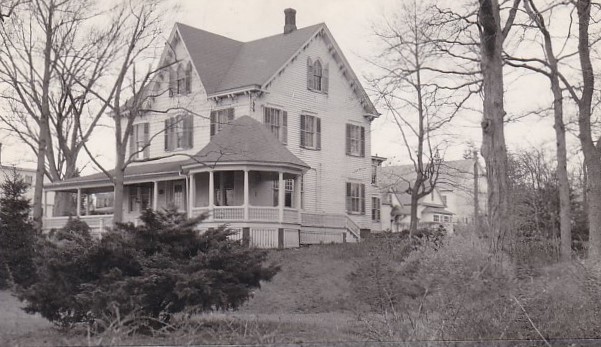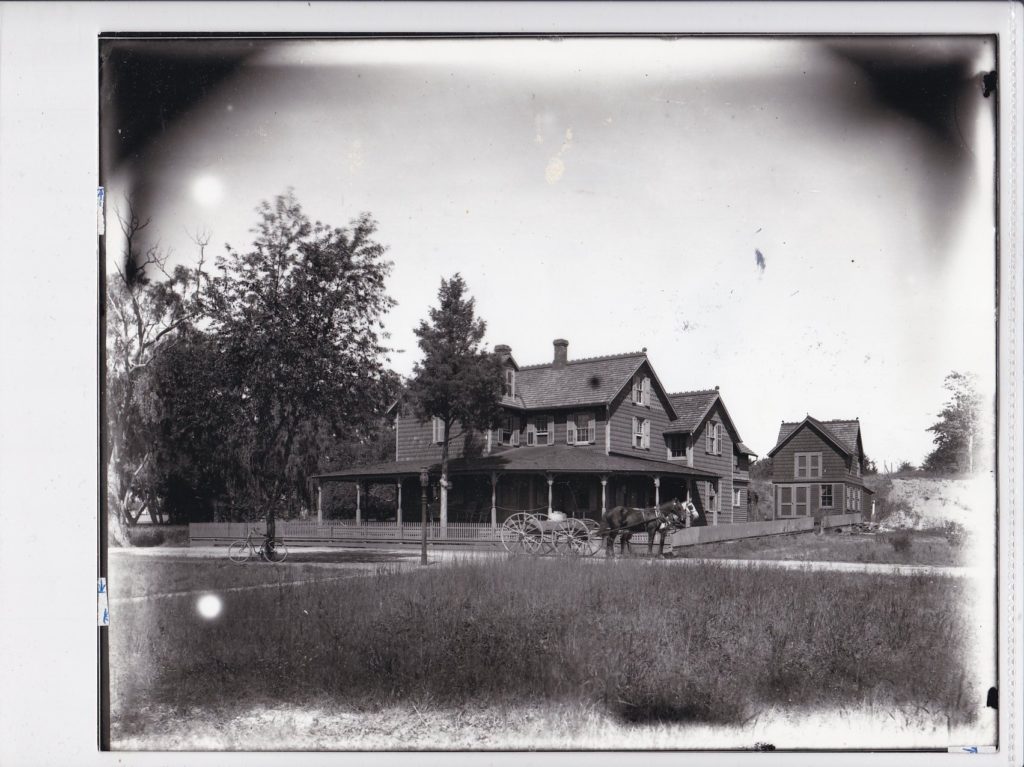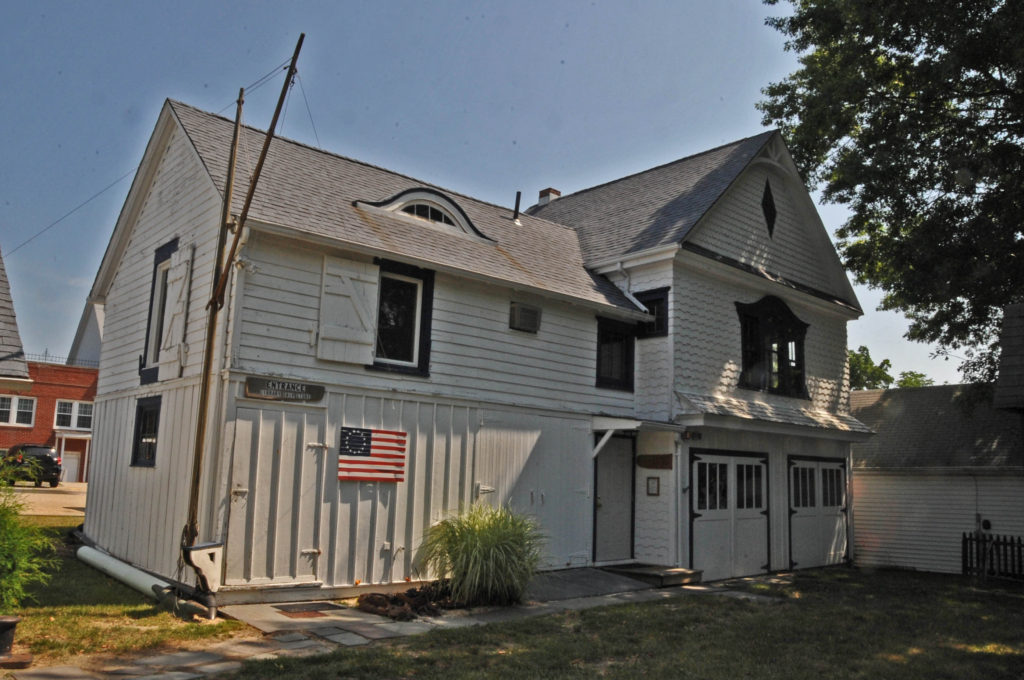Stoutenburgh-Minturn House (c. 1868) [86 E. Water St.]
In 1866, the first trains began to run along the new railroad tracks that had been laid between New York City and Toms River. Soon, train cars brought wealthy visitors from northern urban areas who were eager to enjoy fresh air and summer vacations on the Toms River and nearby bay and ocean. Eventually, some visitors became year-round residents. They began building “cottages” along the bluff overlooking the river. Rebecca Finn, a seasonal vacationer, had this house built for herself in 1868. Although less ornate than other Italianate houses in the area, it is a fine example of vernacular Victorian Gothic architecture. The style reflects the taste of many affluent residents who built vacation homes in Toms River in the late 1800s. She also had a modest 18-foot by 25-foot wood frame mission church built on her property that served local Irish Catholics in the 1870s. Many of the men were railroad workers and the women were cooks and maids for wealthy sea captains who lived in the downtown village area. The congregation grew and later moved into a larger building on Hooper Avenue. Eventually, this house became the residence of John H. Stoutenburgh, a founder of the Toms River Yacht Club and its commodore for almost three decades. Stoutenburgh married the Toms River heiress and granddaughter of Elijah Robbins. Years later, the house was sold to James F. Minturn, a local New Jersey Supreme Court Justice, who bought the property in 1924. It is no longer occupied as a residence but is still used for business purposes.

Stoutenburgh-Minturn House
Williams House (c. 1859) [96 E. Water St.]
This vernacular Victorian house with its Georgian Revival elements is the oldest remaining house constructed east of Hooper Avenue that preserves its original Victorian architectural features. Elisha Walton built the house in 1859. It is a two-story T-shape, wood-frame structure featuring a wraparound porch facing E. Water Street that overlooks the Toms River. In 1887, Walton sold the house to Frank Williams, a Philadelphia machinist who moved to Toms River for health reasons. Williams’ business serviced and maintained many yachts that sailed on the Toms River and Barnegat Bay. He also built some of the first boat engines at Faunce’s Boat Works, located south across the river on Crabb Point, and built other engines at Kirk Boat Works in Toms River. The building has been artfully restored using feather cut wood shingles and clapboard. It has been readapted for business use.

Williams House
Joseph Francis Carriage House (c. 1868) [80 E. Water St.] {at Toms River Seaport Society & Maritime Museum}
This carriage house is only structure that survived a massive fire which destroyed the large estate residence of Joseph Francis (1801-1893). The building is still in use today as a museum and office for The Toms River Seaport Society. Located on a knoll across East Water Street from where the Francis mansion stood for almost a century, it overlooks the Toms River. Francis had the mansion built in the popular Italianate Victorian style on Riverview Point. He is well-known in maritime history as the inventor of the corrugated metal “Lifecar.” Ships transporting people and cargo across the Atlantic Ocean and along the coastline often went aground and began to flounder in the raging sea. Lifecars were credited with saving more than 2,500 lives by the mid-1800s and led to the development of the United States Life-Saving Service. Francis was presented with the Congressional Gold Medal of Honor by President Benjamin Harrison in 1890 for his maritime inventions and improvements.
In 1903, Ringland Kilpatrick, manager of Madison Square Garden in New York City, bought the house. He kept his coach, known as “Tally-Ho,” in the carriage house. Five years later, Britton Cook, a schooner captain and co-owner of The Ocean House Hotel, located in downtown Toms River, bought the property. It was transformed into the popular Riverview Hotel and Restaurant on the Toms River. Tragically, a 1964 fire destroyed the nearly one hundred-year old historic building. Today the carriage house is all that remains of the Francis estate.

Joseph Francis Carriage House
